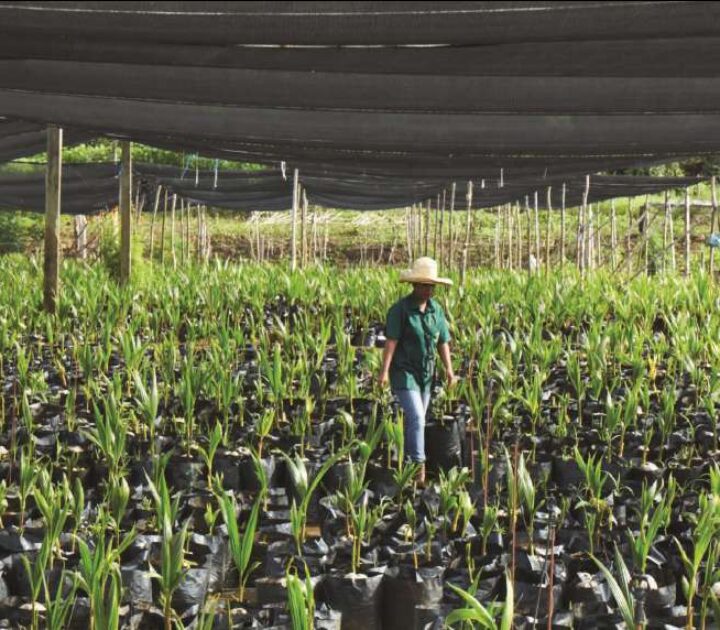
What is the role for venture philanthropy in the post-COVID-19 world? How can venture philanthropy stimulate poverty-reducing sectors such as fintech? What are the main opportunities and challenges for venture philanthropy today?
These questions framed Professor Farber’s conversation with Singapore-based Nicolas Huras, an experienced asset manager and business angel/start-up advisor and Regional Department Head in Asia.
The webinar, led by Professor Vanina Farber, elea Chair of Social Innovation and Nicholas Huras, , appeared live on Wednesday, August 5th at 11am CEST.
Venture philanthropy vs impact investing: what’s the difference?
Impact investors actively and purposefully place capital into enterprises that generate a measurable, desired, beneficial, social and environmental impact.
When it comes to venture philanthropy, Professor Farber reminds participants of John D Rockefeller’s definition that it is “an adventurous approach to funding unpopular social causes”.
In 1969, when this was said, it was the perception of risk and low returns that made some social causes unpopular explains Farber.
A lot has changed since then. Venture philanthropy is now the intersection where “philanthropy meets investment,” she adds.
The rechannelling of philanthropic capital through a venture capital mindset has allowed risk to be increasingly perceived as an opportunity for investing in a sustainable future.
Venture philanthropists focus on social enterprises looking to scale up their impact. They aim to build a strong pipeline of investments and help start-ups navigate that difficult time in their business lifecycle in which they are not yet financially breaking even.
What’s unique about venture philanthropy?
Nicolas Huras explains the unique features that attracted him to venture philanthropy.
In 2012, he began the Swiss venture philanthropy association that unites stakeholders in the venture philanthropy space. At the time, venture philanthropy was the dominating approach compared to impact investing.
In 1997, the Harvard Business Review published a paper entitled “What foundations can learn from venture capitalists.” Huras explains that everyone began to turn their attention towards values and impact in investment decisions.
“Everybody started realizing that a purely financial focus is not sufficient. So people began looking at alternatives,” says Huras.
“In 2012, I realized how much momentum there was.”
He established relationships across both financial and non-profit sectors, including banking and international organizations, taking advantage of his location in Geneva where these worlds meet.
Venture philanthropy as a way forward in the COVID-19 world and beyond
Social and environmental issues are going to present the biggest risks in the future. “As we seek to bring value to the world, we don’t realize how much risk surrounds us,” says Huras.
Venture philanthropy brings opportunity and growth potential for the future. “It’s likely that the biggest issues are going to be resolved through venture philanthropy.”
What makes the difference in long-term sustained impact?
Venture philanthropy reflects a venture-capital mindset explains Nicolas Huras, explaining how “venture philanthropy is run with a commercial mindset in a social environment. Bottom lines and the KPIs are in place to drive the business forward.”
The investment genre also resembles venture capital in that there is high engagement of investors in the companies supported“The investor creates a hands-on relationship with the company. They go to the field, meet the business owners, engage consultants, help build the strategy and business plan and eventually sit on the boards of these companies,” says Huras.
Performance measurement is critical, too. “Financial accountability is there to drive these businesses forward, Huras adds.”
Venture philanthropists also help provide non-financial support and added value by opening doors to the businesses they support to other investors and business owners, as well as potential clients and partners.
Given that impact is central focus of venture philanthropy, returns over a five- to ten-year period are much more common than the typical one-off grants that are re-evaluated on a year-to-year basis in traditional philanthropy.
There is also more diversification in raising money for venture philanthropy today than in the past. “Before, the focus was mostly on grant donations. Financing now has been diversified to include debt and equities,” says Huras.
Replying to a question from the audience, Huras said that venture philanthropy exits can take various forms.
“They can be the same as commercial company structures, such as a merger and acquisition, an IPO, or a tokenization of the company to give access to smaller investors to invest in the business,” explains Huras.
What role for venture philanthropy in fintech and financial inclusion?
Nicolas Huras describes the role of venture philanthropy in solving some of the world’s biggest challenges such as “banking the unbankable.”
Drawing on the example of Indonesia, he says just 20% of people (1 in 5) have a bank account there according to the World Bank.
Huras outlines the potential of fintech, including mobile finance and e-wallets, as well as cross-border remittances that can have a significant impact on the lives of those most vulnerable.
One example of a venture philanthropy-backed company tacking this problem in Indonesia is Julo. The enterprise bridges the gaps by democratizing finance technology to those deemed “unbankable.” It has also been supporting vulnerable groups during the COVID-19 crisis through microcredit schemes.
What role for venture philanthropy beyond finance?
Nicolas Huras draws on the example of Rags to Riches – a company in the Philippines that has managed to scale its operations after being supported for many years exclusively through philanthropic financing.
It upcycles waste materials from clothes and textiles and is an example of an initiative demonstrating a clear societal impact, with women from disadvantaged communities given the opportunity to access income.
Huras also refers to the case of Hilltribe Organics (HTO), located in the north of Thailand. The business is run by a particularly vulnerable population living on less than $3 a day.
HTO provides livelihood opportunities through chicken farming for egg production which has seen individuals triple their income. One percent of funds are reinvested back into a community fund.
What challenges are facing venture philanthropy?
According to Huras, two main challenges are currently holding venture philanthropy back from reaching its fuller potential. First, a lack of standardized impact measurement, which creates significant hurdles to assessing the true social impact of investments.
Second, venture philanthropy is significantly under-capitalized. “Venture philanthropy has lost a bit of its flair, but I believe this is going to come back after COVID-19,” says Huras.
According to him, the majority of venture philanthropy organizations currently have less than $2.5 million investable capital, and only some 8% have a budget greater than $20 million. Ultra high-net-worth individuals are investing only about 1% of total capitalization in venture philanthropy.
How can value be measured?
“You cannot rely on just one source of capital anymore. Blended finance is the future,” says Huras in response to a question regarding diversified sources of funding for philanthropic investments.
On valuation, Huras refers to the Impact Multiple of Money (IMM) metric which was designed to answer one simple question: “For each dollar invested, how many dollars of benefit will the company generate for society or the planet?”
Five components form the basis of the IMM in which investors assess the relevance and scale of the business for evaluation right through to measuring “terminal value”. Terminal value is the probability “that both output and value will continue for five years” after an exit.
What lies ahead for venture philanthropy?
Nicolas Huras outlines seven major shifts in venture philanthropy: from widespread giving to more targeted investing; from a project-based to a sectoral focus in terms of scale of interventions; from approaches that were sector-focused to now being cross-sector or “sector agnostic” and more.
Professor Farber invites participants to join the elea Center for Social Innovation community of like-minded individuals seeking for social innovations that respond to global grand challenges by mobilizing private capital.
To find out more about upcoming webinars from the elea Center for Social Innovation, please visit the Center’s page here.






